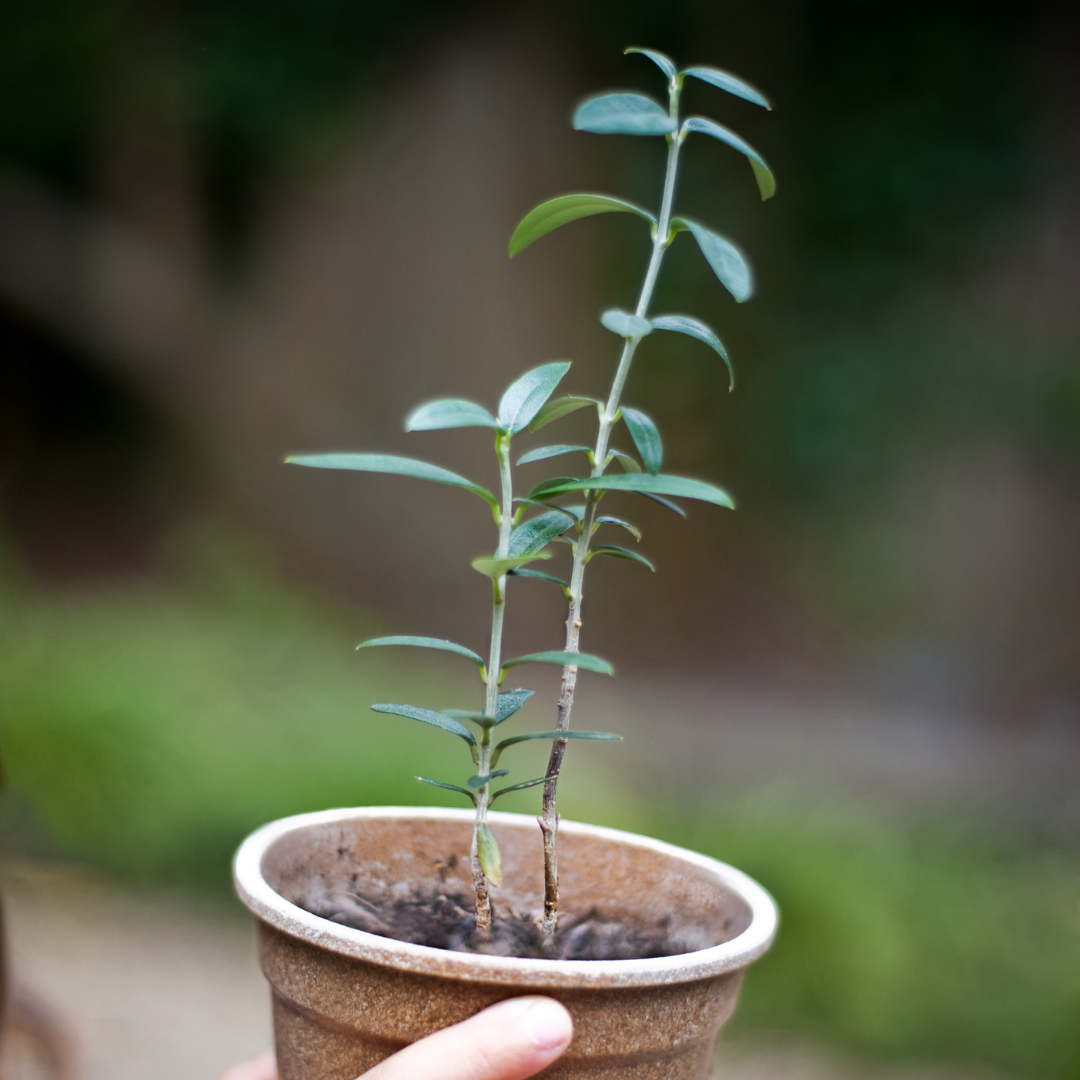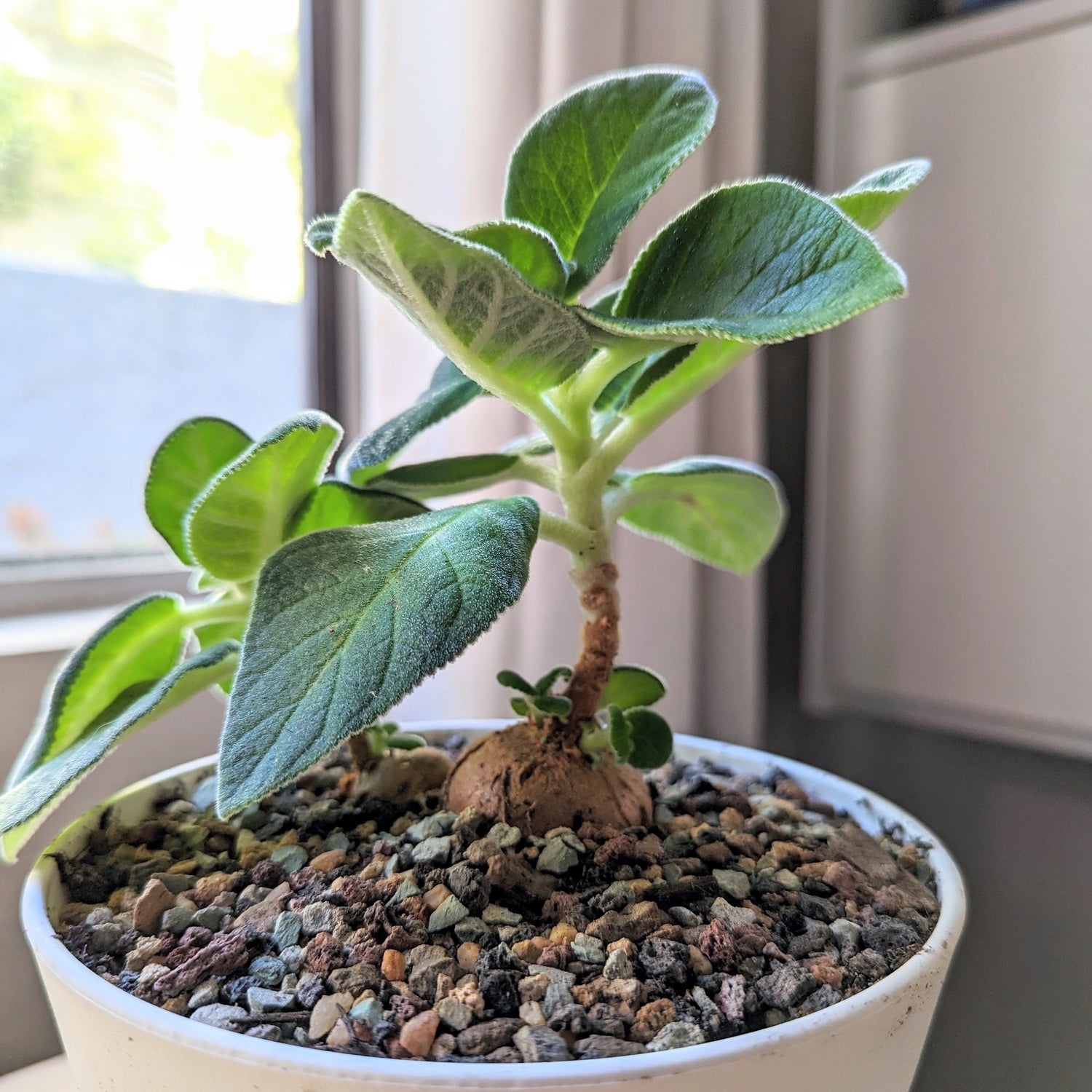When growing from seed, especially growing exotic and houseplant seeds, the first key step consists of picking the right planter. With more easy and quick-germinating seeds like herb and veggie seeds, the planter choice isn't as important, and you'll see germination regardless of whether you're planting in a biodegradable planter, terra cotta, or a plastic planter.
However, when working with seeds that have longer germination times, and that have high humidity requirements(like houseplant seeds), the right planter can be the difference between a seed variety germinating or not.
So, here are 3 key things what you want to see in a seed-starting planter:
1) It's made of a non-absorbent material
It's tempting to just use the terra cotta planter you already have in your home, but if you do, that may mean less of your houseplant seeds will likely germinate, if any at all. Houseplant seeds need those really high moisture levels, and terra cotta simply absorbs too much of the moisture from the soil.
Here are some good alternatives:
 |
Ceramic Planter:I don't personally use ceramic planters much for seed starting, but have several re-potted seedlings in ceramic planters(like this Sinningia baby!) These can definitely work for starting seeds. |
 |
Plastic Planter:A plastic planter, or better yet, mini greenhouse are my go-to for starting seeds. It's not the most eco-friendly option, but there's a lot of versatility with plastic you don't get with other planters. Just make sure to keep these planters to re-use instead of tossing them! |
 |
Rice Hull Planter:An option that not many people have heard of before, but they're growing in popularity and are the ultimate eco-friendly alternative to plastic! They naturally biodegrade after a few years, but are super sturdy and work great for seed starting. |
 |
Metal Planter:Something I used a lot when I was just starting out in the hobby- the tricky part is the drainage! I used to re-use cans from beans and crushed tomatoes, drill holes in the bottom for drainage, spray paint them and use those as my planters for my plants and for starting seeds! |
2) It has good drainage
It's extremely important for your planter to have good drainage. Without drainage, you risk having soggy soil, which can drown the seeds. When you have good drainage(and a good soil medium), you can really moisten up the soil well without worrying about making the soil soggy and thus prevent your seeds drying out.
3) It's not too large

Keep your seed starting planter small! You can direct-sow many garden seed varieties, but not so much houseplant seeds(although that thoroughly depends where you live! Here in San Diego, I've germinated seeds outdoors by accident by tossing bird of paradise or monstera seeds unknowingly in soil during the spring/summer. Still, it's better to be safe than sorry, houseplant seeds aren't cheap!).
If you read our seed guide, you'll know that houseplant seeds need a specific set of conditions to germinate(high humidity and temperature), which is easier to control with a smaller planter.
4) [bonus] It has a humidity dome
Always always always use a humidity dome when starting exotic seed varieties(any seed varieties really!). There are all kinds of solutions for humidity domes, so even if you're not using a purchased mini greenhouse, you can create a humidity dome for your seed setup using what you have at home. You can read my blog post here on different seed starting setups to get some inspiration!
My recommendations:
The beauty of this hobby is you can get creative and really just use your knowledge of the basic requirements of seeds to design a setup that works for your home! So have fun with it! That being said, if you need something to start with, these are the greenhouses I personally use and 100% recommend:
|
12-cell Mini Greenhouse starts at $6 |
Planter with Humidity Dome starts at $3.50 |









3 comments
Will these houseplant seeds successfully germinate in an Aerogarden System? Has anyone tried that before?
Hi Arrie, thanks for the question! No, you don’t need to plant all 20 seeds in one pot, in fact it’s better not to :) Each seed comes with a care sheet that advises on the seed spacing or amount of seeds per planter, on average for a 2"-3" planter it’s best not to plant more than 4 seeds. So what do you do with any leftover seeds? If you have other planters or a mini greenhouse, then you can plant the other seeds, OR you can use the paper towel method(just place the seeds on a moist paper towel and wrap them up, put them in a ziploc baggie to seal in the moisture and keep in a warm spot). It’s also totally fine to just store the seeds in a cool, dry place until you can find the space or time to plant them. Hope this helps :) Good luck and happy planting!
I have purchased the philodendron hope seeds sellout. Do I put all 20 seeds in one pot?. 1st time I’m seeding. Great info, I’m excited about purchasing more if this works out.